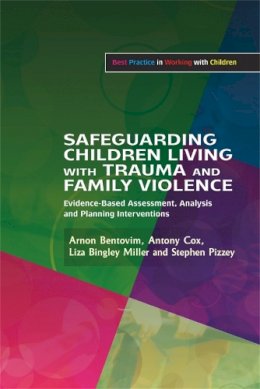
Safeguarding Children Living with Trauma and Family Violence: Evidence-Based Assessment, Analysis and Planning Interventions
Stephen Pizzey
Offering a systematic approach to evidence-based assessment and planning for children living with trauma and family violence, this practical book shows how to assess and analyse the needs of the child, make specialist assessments where there are continuing safeguarding concerns (using the Assessment Framework) and plan effective child-centred and outcome-focused interventions.
The authors analyse the impact of exposure to a climate of trauma and family violence on a child's bioneurological development and on their capacity to form attachments and to develop and reflect on relationships through childhood and adolescence into adulthood. They bring together the assessment of children in need with the evaluation of significant harm and risk, and potential for rehabilitation, and also explore the application of evidence-based approaches to intervention.
This book is an essential tool for all front-line practitioners working with child protection, including social workers, child and adolescent mental health practitioners, police officers, probation workers and domestic violence organizations. It is also suitable for undergraduate, postgraduate and post-qualifying students.
Product Details
About Stephen Pizzey
Reviews for Safeguarding Children Living with Trauma and Family Violence: Evidence-Based Assessment, Analysis and Planning Interventions
Child and Adolescent Mental Health This book will be used as a Social Work teaching tool for many years to come and much coveted by the profession. This book is exceptionally good value... These authors are simply some of the best in their field, not solely academics, but facing the challenges as practitioners of meeting dysfunctional families on a day-to-day basis... The ingredients of such expertise result in timely and essential reading for all children's social workers and policy makers... This would be invaluable for social workers of all levels of experience... this book will be used as a teaching tool for many years and much valued by the profession.
Seen and Heard Social workers and their managers will find this helpful, and any work that aims to provide practitioners with tools to assist them in this complex task will be welcomed. In the post-ICS compliance world, workers are eager to get back to the task of producing quality assessments and this book will make some contribution to that process.
British Journal of Social Work This is a book which, refreshingly, is both scholarly and of great practical use.
Young Minds
